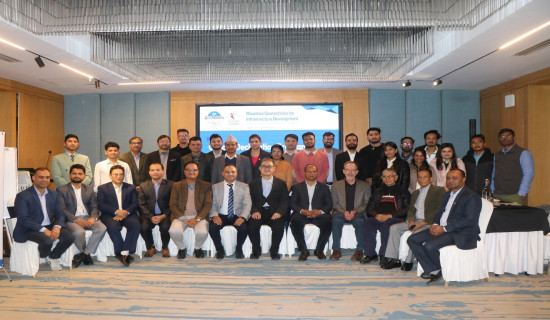- Monday, 1 December 2025
Millet farming declines sharply in Kalikot
By Premraj Simkhada,Kalikot, Oct. 14: Millet production in the hilly and Himalayan districts of Nepal, including Kalikot, has sharply declined in recent years despite growing demand.
Farmers say they have gradually stopped cultivating millet after road expansion made rice more easily available in local markets.
Once a staple crop across most households, millet is now being replaced by rice and maize. As a result, while production has dropped significantly, the market price of millet has surged, currently reaching around Rs. 50 per kilogram, nearly equal to the price of rice.
According to farmers, another reason for the decline is the lack of care and effort in millet cultivation. Even in Palata and Pachal Jharana Rural Municipalities, once known for abundant millet harvests during the monsoon, many farmers have now turned to maize cultivation.
Dhankarna Bishwokarma of Palata-2 said, “After motor roads were built, supply of rice began in the villages by tractor. People started preferring rice over millet, so we stopped planting it.”
He added that households without regular income or working-age family members still grow millet to ensure food security.
“Millet may not be as tasty, but it fills stomachs and supports poor households,” Bishwokarma explained. “Now, those who still grow millet are making good money because government and NGO employees visiting villages buy it directly from them.”
Farmer Gore Bahadur Bam also noted that millet growers have been able to sell their produce easily as awareness of its nutritional benefits has spread.
In Raskot Municipality, which used to follow Palata in millet production, cultivation has decreased too.
“Around 2002, six pathis (about 24 kilograms) of millet cost just Rs. 100,” said local farmer Basaraj Bam.
“Now, the same amount costs three times more, roughly Rs. 100 for just two pathis, or Rs. 25 per mana (around half a kilogram).”
Bam added that although awareness of millet’s health benefits has revived some interest, cultivation levels remain far lower than in the past.
“Previously, families harvested over 10 quintals of millet each year, but now production has dropped dramatically,” he said.
According to the Kalikot District Agriculture Development Office, overall millet production has fallen by around 60 to 65 per cent.
Roshan Pandey of the office attributed the drop to changing food habits, easier access to rice and the growing preference for maize farming.

















